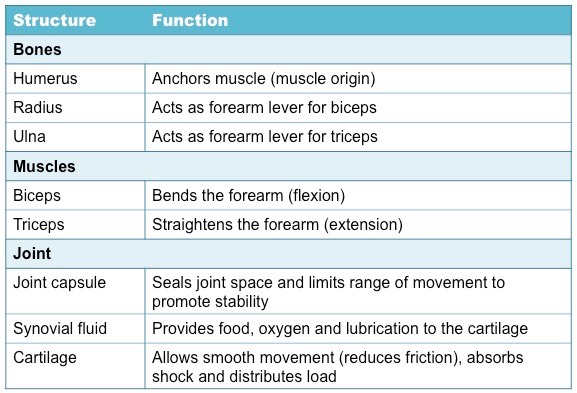![]()
Understanding:
• Synovial joints allow certain movements but not others
Synovial joints are capsules that surround the articulating surfaces of two bones (i.e. where the bones connect)
- Joints function to maintain structural stability by allowing certain movements but not others
Synovial joints consist of three main components:
- Joint capsule – Seals the joint space and provides stability by restricting the range of possible movements
- Cartilage – Lines the bone surface to facilitate smoother movement, as well as absorbing shock and distributing load
- Synovial fluid – Provides oxygen and nutrition to the cartilage, as well as lubrication (reduces friction)
There are six main types of synovial joints that allow for different ranges of movement, which are (in order of mobility):
- Plane joints (least mobility), hinge joints, pivot joints, condyloid joints, saddle joints, ball and socket joints (most mobility)
Types of Synovial Joints

![]()
Skill:
• Annotation of a diagram of the human elbow
The human elbow joint is an example of a hinge joint that is located between the humerus and radius / ulna
- It is capable of angular movement in one direction (i.e. flexion and extension only)
- A small amount of rotation may be possible, but excessive multiaxial movement will cause injury
Diagram of the Human Elbow Joint

Elbow Joint Structures

